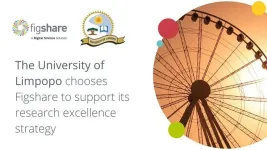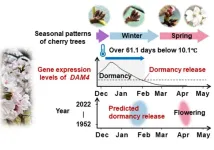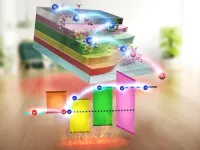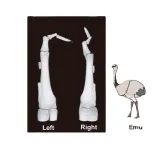(Press-News.org) HOUSTON – (Sept. 19, 2024) – Rice University and Baylor College of Medicine have received $2.8 million in funding from the National Heart, Lung, and Blood Institute (NHLBI), a division of the National Institutes of Health (NIH), for research on reducing inflammation and lung damage in acute respiratory distress syndrome (ARDS) patients.
The study, titled “Cell Based Immunomodulation to Suppress Lung Inflammation and Promote Repair,” will be co-led by Omid Veiseh, a professor of bioengineering and faculty director of the Rice Biotech Launch Pad, and Ravi Kiran Ghanta, a professor of surgery at Baylor. Veiseh and Ghanta are developing a new translational cell therapy platform that allows better local administration of cytokines to the lungs in order to suppress inflammation and potentially prevent lung damage in ARDS patients.
ARDS affects over 300,000 Americans annually, with a high mortality rate of 43% driven significantly by inflammation, specifically in the one-third of patients with hyperinflammatory ARDS. While cytokines like IL-1Ra and IL-10 can reduce inflammation and aid lung repair, current delivery methods cause poor biodistribution, toxicity and immune complications.
The new approach developed by Ghanta and Veiseh overcomes these issues by using engineered retinal pigment epithelial (RPE) cells to locally and sustainably produce these cytokines in the lungs. The cells are encapsulated in a protective layer allowing them to subsist immune system attacks. This method allows precise, targeted anti-inflammatory therapy, reducing lung damage and improving ARDS outcomes while side-stepping the risks of systemic delivery.
“ARDS is a devastating condition that affects hundreds of thousands of Americans every year, with inflammation driving long-term respiratory failure and high mortality rate in many of its patients,” said Ghanta. “Current cytokine therapies face major obstacles in terms of delivery and safety, which is why our team is developing a novel cell therapy platform to safely conduct local delivery to the lungs.
“Our approach harnesses engineered RPE cells to act as localized cytokine ‘factories,’ delivering anti-inflammatory agents directly to the lungs. This technology represents a critical advancement in addressing inflammation and lung damage in ARDS, with the potential to significantly improve patient outcomes.”
“We are grateful to the NHLBI for this funding, as it certifies the importance of finding safer ways to treat inflammation and ultimately treat ARDS patients,” Veiseh said. “Thanks to the collaborative work between Rice and Baylor, we will be able to ultimately create new cell therapy systems that ameliorate lung health and increase survival rates for people suffering from ARDS. “This study highlights the spirit of collaboration characteristic of the Rice ecosystem and demonstrates the launch pad’s commitment to generating groundbreaking technologies that ultimately reach the clinic and make a positive impact on patients’ lives.”
-30-
This news release can be found online at news.rice.edu.
Follow Rice News and Media Relations via Twitter @RiceUNews.
About the award:
Project Title: “Cell Based Immunomodulation to Suppress Lung Inflammation and Promote Repair”
URL: https://reporter.nih.gov/search/IukozIbU_0eBpA8HUDsahQ/project-details/10940864
About Rice:
Located on a 300-acre forested campus in Houston, Rice University is consistently ranked among the nation’s top 20 universities by U.S. News & World Report. Rice has highly respected schools of architecture, business, continuing studies, engineering, humanities, music, natural sciences and social sciences and is home to the Baker Institute for Public Policy. With 4,574 undergraduates and 3,982 graduate students, Rice’s undergraduate student-to-faculty ratio is just under 6-to-1. Its residential college system builds close-knit communities and lifelong friendships, just one reason why Rice is ranked No. 1 for lots of race/class interaction, No. 2 for best-run colleges and No. 12 for quality of life by the Princeton Review. Rice is also rated as a best value among private universities by Kiplinger’s Personal Finance.
About the Rice Biotech Launch Pad:
The Rice Biotech Launch Pad is a Houston-based accelerator focused on expediting the translation of Rice University’s health and medical technology discoveries into cures. This initiative is designed to help advance internally discovered platform technologies from concept to clinical studies and commercialization. The Rice Biotech Launch Pad will identify and support highly differentiated projects while driving the expansion of Houston as a world-class medical innovation ecosystem. The accelerator will bring together local researchers with a network of industry executives. Rice’s bioengineering department is a world-renowned institution that is currently ranked in the top 10 universities for its bioengineering programs by U.S. News & World Report. Its faculty is highly distinguished, having received awards and distinctions from institutions including the National Academy of Engineering, National Academy of Sciences and MacArthur Foundation. For more information, please visit https://biotechlaunchpad.rice.edu/.
About the Baylor College of Medicine:
Baylor College of Medicine in Houston is recognized as a health sciences university and is known for excellence in education, research and patient care. Baylor is a top-ranked medical school and listed 20 th among all U.S. medical schools for National Institutes of Health funding and No. 1 in Texas. Located in the Texas Medical Center, Baylor has affiliations with seven teaching hospitals and jointly owns and operates Baylor St. Luke’s Medical Center, part of St. Luke’s Health. Currently, Baylor has more than 3,000 trainees in medical, graduate, nurse anesthesia, physician assistant, orthotics and genetic counseling as well as residents and postdoctoral fellows. Follow Baylor College of Medicine on Facebook (http://www.facebook.com/BaylorCollegeOfMedicine) and Twitter (http://twitter.com/BCMHouston).
END
NIH awards $2.8M to Rice, Baylor College of Medicine for research on acute respiratory distress syndrome
2024-09-19
ELSE PRESS RELEASES FROM THIS DATE:
The University of Limpopo chooses Figshare to support its research excellence strategy
2024-09-19
Figshare, a leading provider of institutional repository infrastructure that supports open research, is pleased to announce that the University of Limpopo has chosen Figshare to facilitate the collection, management, sharing and preservation of its research data.
The University of Limpopo – one of the top public universities in South Africa offering undergraduate and postgraduate qualifications, and a variety of short learning programmes – will become the 20th institution in the country using Figshare as their data repository.
Using ...
A new forecasting model based on gene activity predicts when Japan’s cherry buds awake from dormancy
2024-09-19
Fukuoka, Japan – Japan in spring is famous for its cherry blossoms, or sakura, which begin flowering in the southern region of Kyushu and blaze upwards to the remote north of Hokkaido. The most abundant cherry tree cultivar, Somei Yoshino, is the iconic symbol of spring, as the cloned trees flower simultaneously at each site, creating a fleeting explosion of white-pink blossom that enraptures locals and tourists alike. The flowering forecasts of Somei Yoshino are poured over for months before flowering, as visitors plan their trips and locals ...
New organic thermoelectric device that can harvest energy at room temperature
2024-09-19
Fukuoka, Japan—Researchers have developed a new organic thermoelectric device that can harvest energy from ambient temperature. While thermoelectric devices have several uses today, hurdles still exist to their full utilization. By combining the unique abilities of organic materials, the team succeeded in developing a framework for thermoelectric power generation at room temperature without any temperature gradient. Their findings were published in the journal Nature Communications.
Thermoelectric devices, or thermoelectric ...
Activity in brain system that controls eye movements highlights importance of spatial thinking
2024-09-19
The superior colliculus is a midbrain region that is traditionally thought to help animals orient themselves toward important locations in space, like directing their eyes and head toward a bright flash of light. New research from the University of Chicago shows that this part of the brain also plays a role in complex cognitive tasks like visual categorization and decision making.
In the new study, published in Nature Neuroscience, scientists measured the information contained in patterns of brain cell activity across multiple brain regions involved in visual category decisions. The researchers monitored activity in the superior colliculus (SC) and part of the posterior parietal ...
New research reenvisions Earth’s mantle as a relatively uniform reservoir
2024-09-19
Lavas from hotspots—whether erupting in Hawaii, Samoa or Iceland—likely originate from a worldwide, uniform reservoir in Earth’s mantle, according to an evaluation of volcanic hotspots published today in Nature Geoscience.
The findings indicate Earth’s mantle is far more chemically homogenous than scientists previously thought—and that lavas only acquire their unique chemical “flavours” enroute to the surface.
“The discovery literally turns our view of hotspot lavas and the mantle upside down,” said Dr. Matthijs Smit, associate professor ...
Global warming leads to drier and hotter Amazon: reducing uncertainty in future rainforest carbon loss
2024-09-19
The Amazon, often called the "lungs of the planet", is the world’s largest tropical forest, playing a crucial role in the global climate system due to its vast carbon storage. While it is typically warm and humid all year round, continued climate change poses the threat of more frequent and severe droughts and heat extremes. A new study, published in Nature Communications delves into future projections of the Amazon carbon cycle, focusing specifically on the impacts driven by climate change.
Scientists use the latest generation of Earth system models from the Coupled Model Intercomparison Project which contributed to ...
Low-carbon ammonia offers green alternative for agriculture and hydrogen transport
2024-09-19
A new way of making ammonia by harnessing the unique power of liquid metal could lead to significant cuts in carbon emissions caused by production of the widely-used chemical.
Ammonia is used in fertiliser to grow much of our food, but also plays a role in clean energy as a carrier to safely transport hydrogen.
The global production of ammonia, however, comes at a high environmental cost: it consumes over 2% of global energy and produces up to 2% of global carbon emissions.
RMIT Research Fellow and study ...
New mechanism uncovered for the reduction of emu wings
2024-09-19
Researchers have uncovered a fascinating mechanism behind the reduction and asymmetry of emu wing bones. The wings not only show significant shortening, but the skeletal elements also fuse asymmetrically, a phenomenon traced back to the absence of muscle formation in the distal regions of the wings. During development, this lack of muscle leads to insufficient mechanical stress, which is crucial for proper bone formation. The team identified muscle progenitor cells with a unique dual identity, combining characteristics of both somite1-derived myogenic and lateral plate mesoderm2 cells. These ...
Zeroing in on the genes that snakes use to produce venom
2024-09-19
Only about ten percent of the world’s roughly 4,000 snake species have venom strong enough to seriously hurt a human, but that’s enough for snake bites to be an important public health concern. To help better understand how snakes make their venom and how venoms differ from one species to another, researchers developed a new way to zero in on the genes that snakes use in venom production. Their work was published in the journal Molecular Ecology Resources.
“We’ve developed a tool that can tell us which venom-producing genes are present across an entire snake family in one fell swoop,” says Sara Ruane, the Assistant Curator of Herpetology in the ...
Maynooth University study reveals impact of homework on student achievement in maths and science
2024-09-19
· Daily homework of up to 15 minutes most effective for maths achievement
· Homework assigned three to four times a week benefits science performance
· Short duration homework just as effective as longer assignments
Researchers at Maynooth University’s Hamilton Institute and Department of Mathematics and Statistics in Ireland have unveiled significant findings on the role of homework in student achievement. The research, led by Prof Andrew Parnell, Nathan McJames and Prof Ann O’Shea, used a new AI model to analyse data from the Trends in International Mathematics and Science ...







